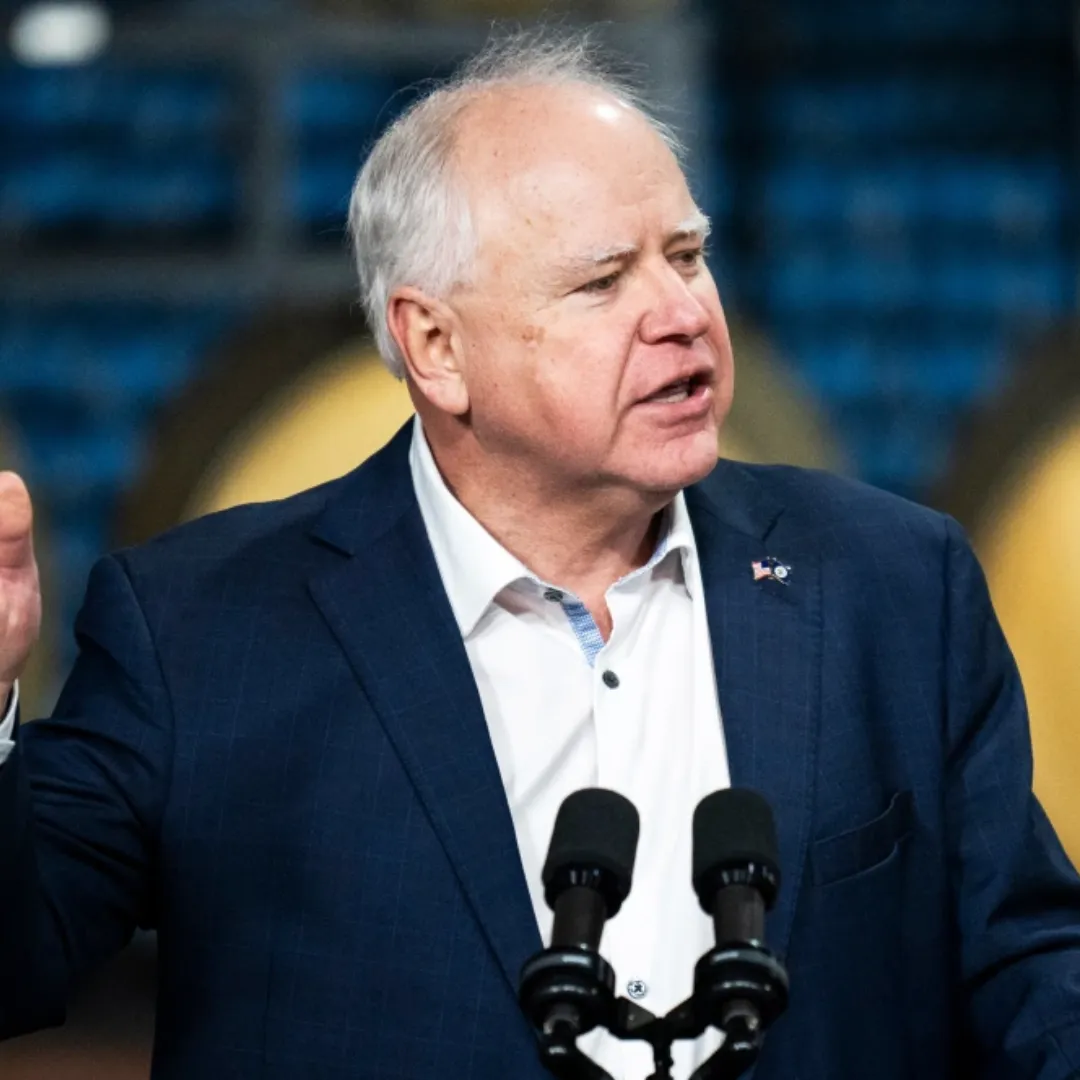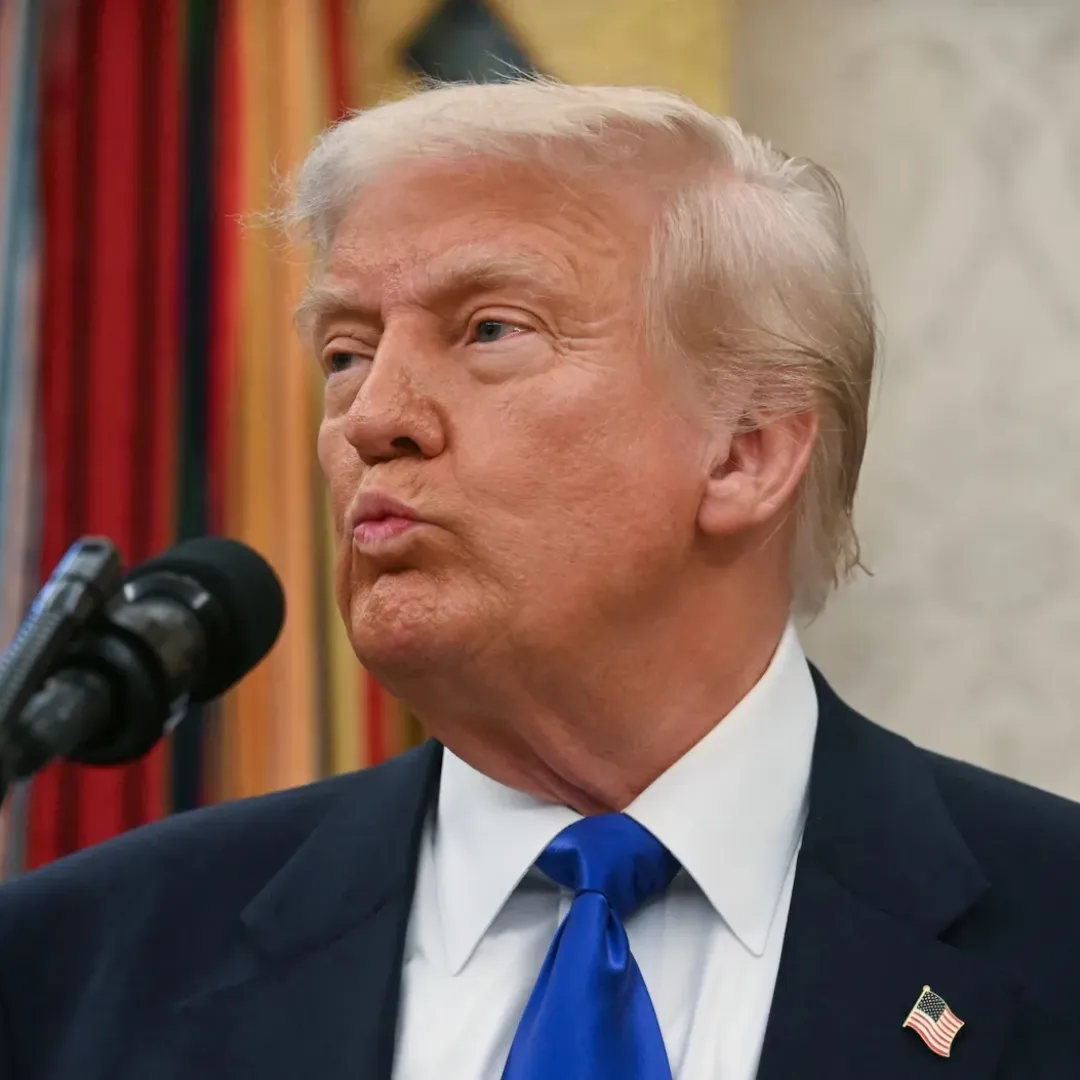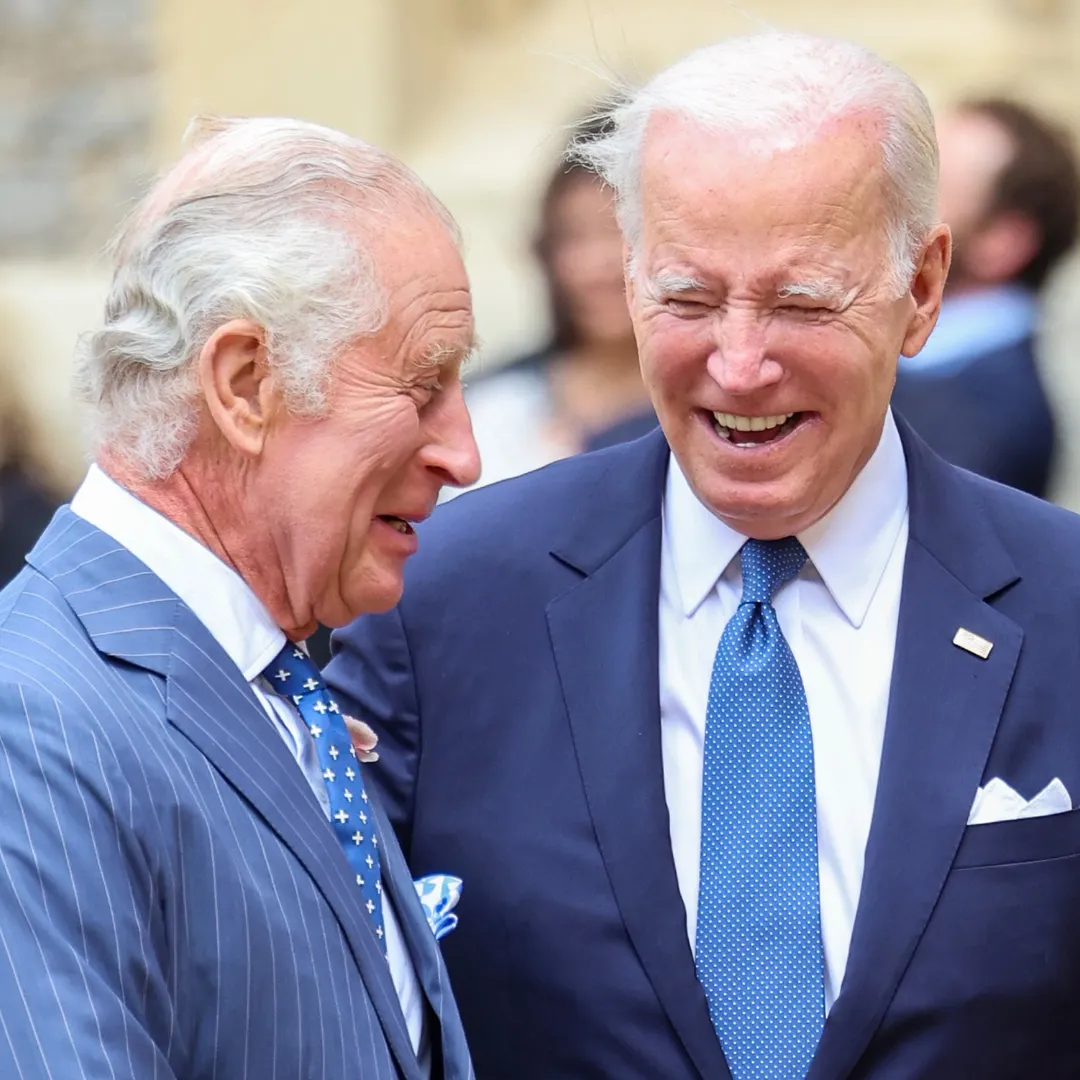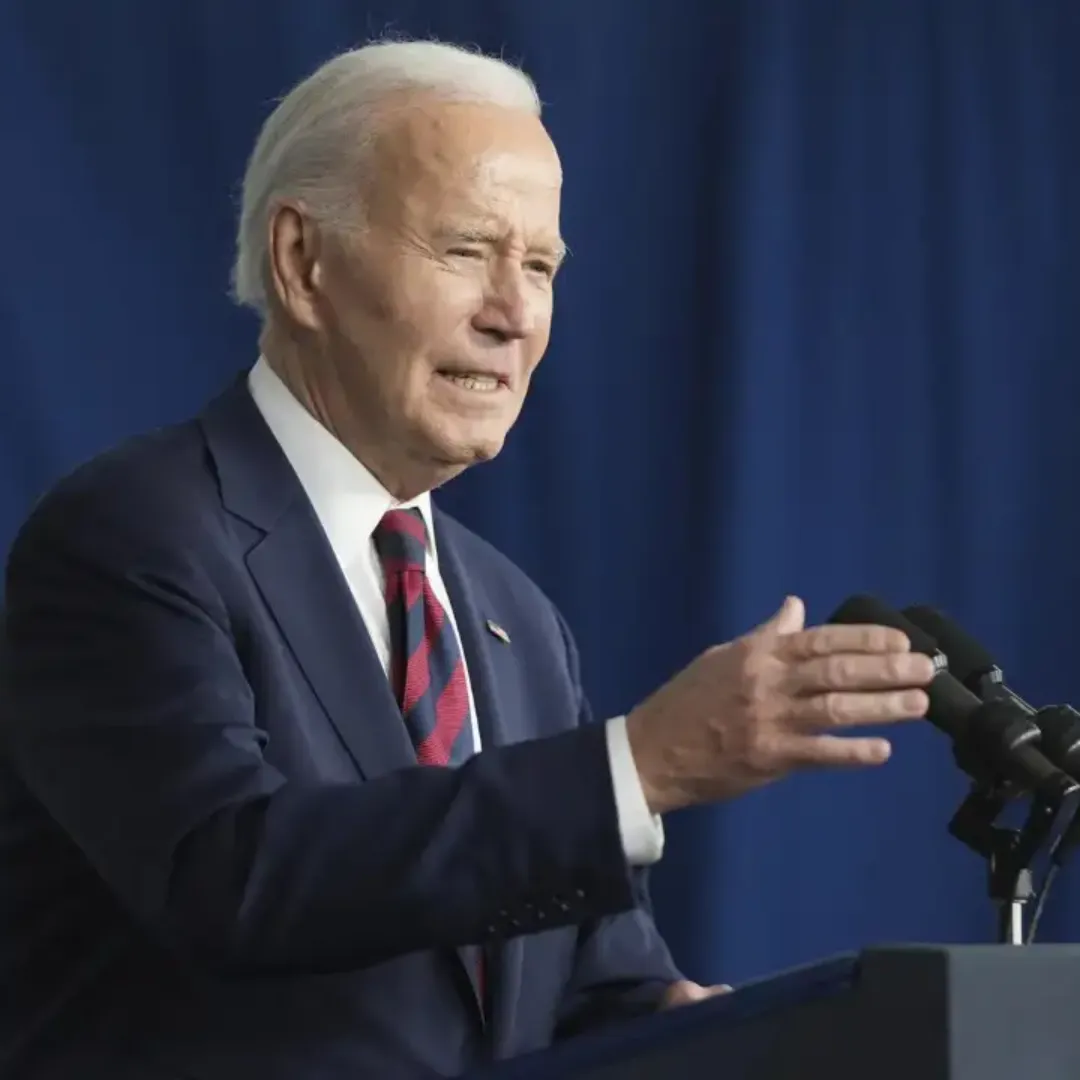President Donald Trump on Wednesday acknowledged that his sweeping tariff policy may lead to fewer consumer options and higher prices for American families, while insisting the brunt of the economic burden will fall on China.
As new economic data points to a slowdown, the president offered a defiant defense of his strategy and pointed fingers at his predecessor, former President Joe Biden, for the early setbacks in the economy.
In a Cabinet meeting marking his first 100 days in office, Trump responded to growing scrutiny over the state of the economy following a new government report that showed the U.S. economy contracted during the first quarter of the year.
According to the Commerce Department, gross domestic product shrank at an annual rate of 0.3 percent, driven by a surge in imports ahead of the imposition of steep tariffs.
“You know, somebody said, ‘Oh, the shelves are going to be open,’” Trump said during the meeting. “Well, maybe the children will have two dolls instead of 30 dolls. So maybe the two dolls will cost a couple bucks more than they would normally.”
Trump’s remarks seemed to embrace the tradeoffs of his economic policy, even as they highlighted the potential costs for American families. His administration has imposed sweeping tariffs on Chinese goods, including autos, steel, aluminum, electronics, and other consumer items.
The president has framed the move as a necessary and overdue correction to decades of what he sees as unfair trade practices.
“These tariffs are a tool,” Trump said, maintaining that they will push companies to bring manufacturing back to the United States and reduce reliance on foreign supply chains.
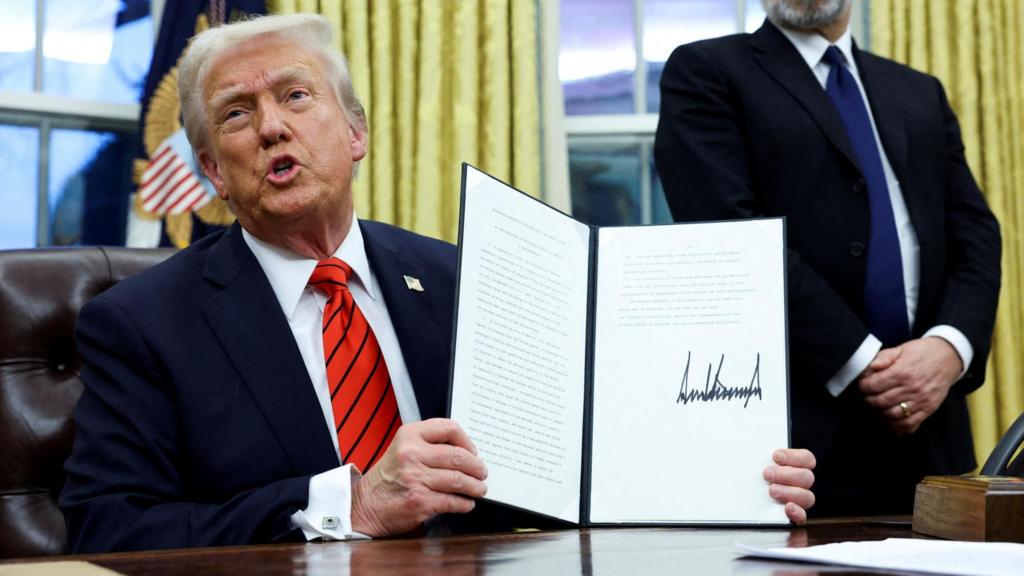
Yet the economic numbers suggest that American consumers and businesses may be bracing for the fallout. The negative GDP growth reflects heightened import activity in the early months of the year, as companies rushed to bring in materials and products before tariffs fully take effect.
Consumer spending, while still strong, appeared to surge largely in anticipation of rising costs, rather than as a sign of sustained economic optimism.
Democrats wasted little time drawing a connection between Trump’s policies and the disappointing numbers.
“In just 100 days, President Trump has taken the U.S. economy from strong, stable growth to negative GDP,” said Heather Boushey, an economist who served on Biden’s White House Council of Economic Advisers. “This astonishing turn of fortune is directly due to the incoherence of his economic policy and his mismanagement of federal policy more generally.”
In his public remarks, Trump dismissed those criticisms, instead blaming Biden for creating a fragile economic foundation that his administration inherited.
“This is Biden’s Stock Market, not Trump’s,” Trump posted on his social media site early Wednesday, after the markets responded to the GDP report with a dip. “Tariffs will soon start kicking in, and companies are starting to move into the USA in record numbers. Our country will boom, but we have to get rid of the Biden ‘Overhang.’ This will take a while, has NOTHING TO DO WITH TARIFFS.”
While Trump continues to insist that tariffs are part of a larger plan to stimulate domestic manufacturing and attract global investment, his messaging has grown more complicated. On one hand, he is pushing tariffs as a negotiation tool to strike better trade deals.
On the other, his budget relies on hundreds of billions of dollars in projected tariff revenue to fund new income tax cuts and offset planned increases in defense spending.
The White House has highlighted announcements from companies such as Nvidia, Apple, Johnson & Johnson, and Soft Bank as evidence that the economy is poised for a manufacturing renaissance. Trump cited these firms in a Wednesday speech as examples of the kind of investment his administration is encouraging.
Still, some of these announcements were already underway or stem from initiatives that began during Biden’s tenure. One example is the Taiwan Semiconductor Manufacturing Company, or TSMC, which began planning its first Arizona plant during Trump’s first term in 2020, later expanded under Biden, and received additional incentives through the CHIPS and Science Act, a bipartisan legislative effort passed under the previous administration.
Commerce Secretary Howard Lutnick, in his comments during the Cabinet meeting, pointed to a recent visit to TSMC’s facilities as a success story. Trump, however, dismissed the role of government support, instead attributing the company’s expansion solely to his tariffs.
“They’re building because of the tariffs,” Trump said, reinforcing his belief that import penalties are pushing global firms to establish operations in the U.S.
But critics say that Trump’s fixation on tariffs oversimplifies the complex dynamics of global supply chains and ignores the investment certainty that companies need to make long-term decisions. Representative Suzan DelBene, a top House Democrat and head of the party’s campaign arm, was blunt in her assessment.
“We’ve only seen the beginning of the dangerous impacts from Trump’s random policies,” DelBene said. “U.S. manufacturers still depend on parts and components from China. Trump’s approach reflects a complete misunderstanding of what American businesses need to succeed—stability, predictability, and partnership.”
Democrats argue that the economy Trump inherited was on a trajectory of steady job growth, low unemployment, and declining inflation, conditions that have been quickly disrupted by abrupt policy shifts and confrontational trade moves.

They say the administration’s mass layoffs of federal employees, hasty tax reforms, and rapidly escalating trade war with China risk throwing the economy off course just as global conditions were stabilizing.
Trump has repeatedly dismissed those claims, insisting instead that any economic pain now will result in long-term gain. He says tariffs are a temporary sacrifice that will be repaid with manufacturing jobs, national security, and independence from foreign suppliers.
In a town hall on NewsNation Wednesday night, Trump stood by his economic policies, stating he had no regrets about the decisions made so far in his second term.
“I just think that I’ll be able to convince people how good this is,” he said when asked whether he believed his message was getting through to the public.
Despite Trump’s confidence, economic experts are divided on the long-term effects of the administration’s trade war. Some warn that supply chain disruption, inflationary pressure, and international retaliation could deepen economic instability and further complicate recovery efforts.
Others argue that if handled carefully, strategic tariffs can promote domestic production and reorient trade policy in a way that benefits American workers.
The problem, critics say, lies in the unpredictability of the current approach.
“Chaos and dysfunction are not going to help build investment,” DelBene said. “A strong economy needs stability and certainty. We haven’t seen that.”

As Trump marks his 100th day back in office, the tension between his promises and the early results remains front and center. His administration is betting that the American public will accept short-term disruption in exchange for long-term gain. Whether that bet pays off—or leads to deeper economic anxiety—remains to be seen in the coming months.

